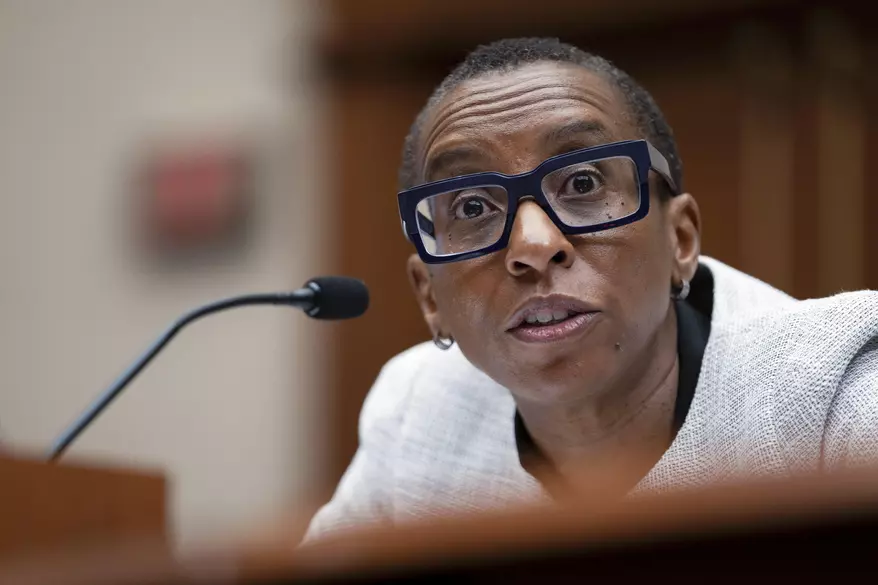ACADEMIA APPROACHES END OF THE LIFE CYCLE
Who would have thought that what many regarded as the world’s premier educational institution — Harvard — would end up having the worst rating among major universities for free speech? And have as a president a mediocre scholar and plagiarist who would be unwilling to condemn genocide before a congressional committee?
That Harvard and other former elite universities had been captured by the (misnamed) progressives, socialists, and other enemies of free thought and expression is widely accepted as the reason for their decline. There is no doubt that the forces of statist evil have greatly hastened the decline in respectability, reputations and influence of once great institutions. But that is only a partial explanation.
Business students are taught about the four stages of product life cycles: introduction, growth, maturity and decline. Some products have long life cycles: for example, the steam locomotive, which was introduced in the 1830s and was finally replaced by diesel-electrics in the 1950s. The plastic hula hoop was introduced in 1958, and within weeks, most children had one, but the fad soon cooled, and relatively few are sold today.
Even great empires go through life cycles. The British Empire began about 1600, peaked about 1900, and then declined until the early 1960s when it morphed into the British Commonwealth. Companies and other institutions also go through life cycles. The Dow Jones Industrial Average reflects the rise and fall of companies and industries — with only three of the current 30 companies having been on the list before 1990.
The concept of the modern university began in the Middle Ages, with Oxford and Cambridge in England, Padua in Italy, Charles in Prague, Vienna in Austria, Heidelberg in Germany, Uppsala in Sweden, and others. Harvard is the oldest American university (1636), followed by William and Mary (1693), and then other well-known universities, including Yale (1701), the University of Pennsylvania (1740), Princeton (1746) and Columbia (1754), which are now in their life-cycle decline. In 1785, the University of Georgia became the first state-chartered university. Most of the early schools were started by religious orders with a heavy emphasis on theology, philosophy and, in some cases, history, including the ideas of ancient Greek and Roman thinkers.
It was not until the addition of practical vocational training that universities began to grow rapidly in number and students in the 1800s. The U.S. Military Academy at West Point was the first American engineering school. State-chartered universities, with a focus on schools of agriculture and engineering, became the new norm. Medicine, business, music and other disciplines were quickly added. By the 1900s, most major universities — both state and private — evolved into offering a broad array of subjects (the mature stage of the life cycle). In the 1960s, universities reached their peak in respect and influence as presidents such as John F. Kennedy raided their faculties for men of ideas.
The decline began in 1968, with dissatisfaction over the Vietnam War and student riots. I was a student at Columbia in the spring of ’68 when the leaders of the free speech movement shut down the campus. Lectures by various radicals and malcontents were being given on the campus lawns. Professional and colored printed materials were immediately available, explaining the “superiority” of Marxist economics and other aspects of socialism. (This was well before the days of instant print.) A quarter of a century later, while serving as an economic adviser to leaders of the new noncommunist government in Russia, I was told by a former KGB official that the Soviets had warehoused much communist propaganda in New York and other major U.S. cities — waiting for the “right time” to distribute it.
You don’t have to be a conspiracy theorist to understand that the socialists have spent much of the last century trying to destroy traditional American education that centered on individual attainment. During the Vietnam War, I was teaching at what is now New York University’s graduate School of Engineering. The faculty meetings had degraded into rants and resolutions against the war — as if anyone in Washington cared about what a group of professors thought. It was just one little sign of the increasing irrelevance of academia.
Serious public policy discussions and debates had moved from the universities to the rapidly rising independent think tanks. Most universities have become groupthink propaganda machines and monuments to irrelevant excess and self-dealing.
Meanwhile, most businesses have shown remarkable productivity increases. By contrast, universities with resistance to innovation, lighter teaching loads for professors, and more administrators per student have had negative productivity growth. Those of us who went to “name” schools were, in part, paying for the brand name. But now, as these brands have been tarnished and the product shown to be increasingly defective, students and their parents who fund this fraud are increasingly walking away because of a nearly infinite number of perfectly good alternatives. Employers seeking competence, knowledge and diligence in their workforces are realizing that the old-school brand names no longer certify excellence and creative thought.
The internet and now artificial intelligence allow endless experimentation in developing far more cost-effective and individually tailored education. The traditional university, with its useless overhead and politically correct baggage, will evolve into a social club with sports teams.
• Richard W. Rahn is chairman of the Institute for Global Economic Growth and MCon LLC.
https://www.washingtontimes.com/news/2023/dec/18/universities-become-increasingly-irrelevant/
© Copyright 2023 The Washington Times, LLC.
